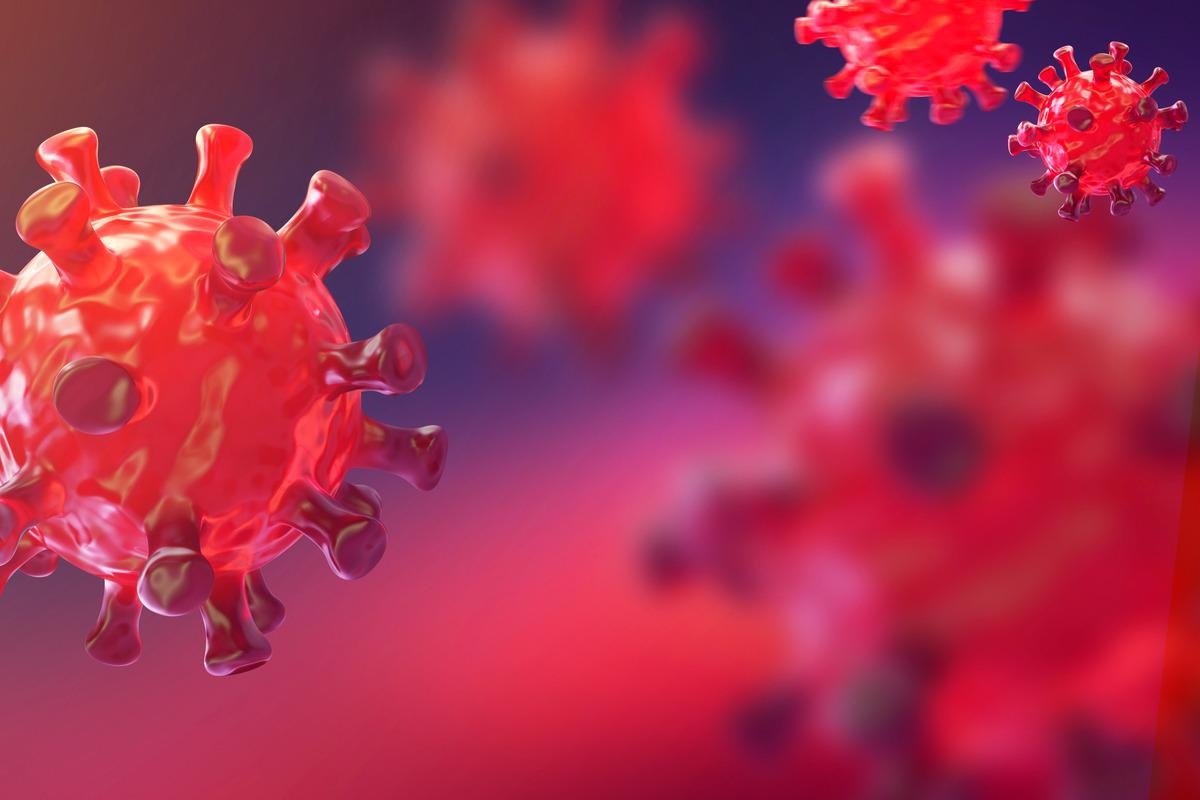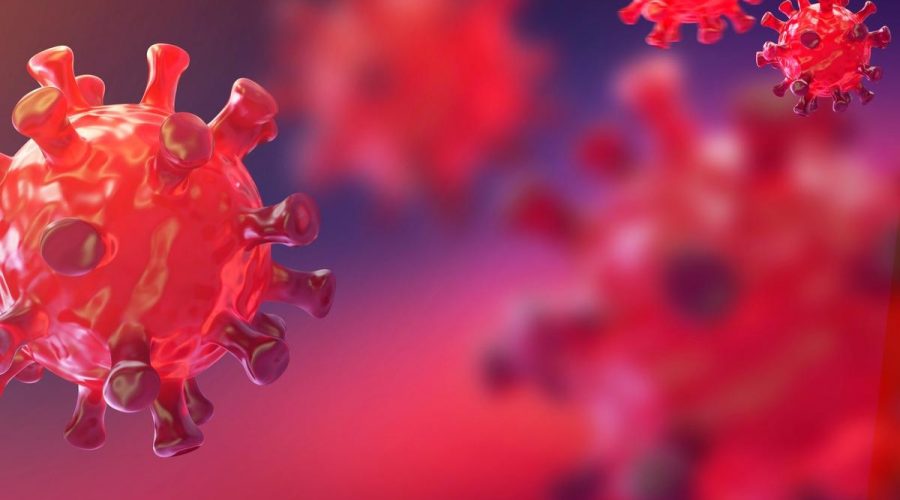SARS-CoV-2 shown to spread through cell-to-cell transmission
Severe acute respiratory syndrome coronavirus 2 (SARS-CoV-2) is a novel beta-coronavirus that is closely related to severe acute respiratory syndrome coronavirus (SARS-CoV) and Middle East respiratory syndrome–related coronavirus (MERS-CoV), two previous highly deadly human coronaviruses. Both SARS-CoV-2 and SARS-CoV utilize angiotensin-converting enzyme 2 (ACE2) as the major receptor for entry into target cells, which is mediated by the spike (S) proteins.
The SARS-CoV-2 S protein is also responsible for the generation of neutralizing antibodies, making it an important part of the host's immune response to viral infection.
 Study: SARS-CoV-2 spreads through cell-to-cell transmission. Image Credit: MIA Studio/Shutterstock
Study: SARS-CoV-2 spreads through cell-to-cell transmission. Image Credit: MIA Studio/Shutterstock
Cell-free particles and cell-cell interaction are the two ways that enveloped viruses propagate in cultured cells and tissues. Tight cell-cell interactions, occasionally generating virological synapses, where local viral particle density increases, resulting in efficient virus transfer to nearby cells, are typical of the latter way of viral transmission. Additionally, as established for HIV and hepatitis C (HCV) virus, cell-to-cell transfer can elude antibody neutralization, allowing for effective virus propagation and pathogenesis. SARS-CoV-2 has been linked to low levels of neutralizing antibodies and a lack of type I interferons (IFNs), which may have exacerbated the COVID-19 pandemic and illness development.
In this study, researchers from Ohio State University and Washington University School of Medicine investigated SARS-CoV-2 cell-to-cell transmission in the context of cell-free infection and compared it to SARS-CoV. The findings of this in vitro investigation show a hitherto unknown function for cell-to-cell transmission in SARS-CoV-2 dissemination, pathogenesis, and immunity to antibodies in vivo.
The study
The researchers wanted to see if SARS-spike CoV-2's protein is important for viral transmission via cell-cell interaction. The authors used an intron-Gaussia luciferase (inGluc) HIV-1 lentiviral vector bearing the spike of interest to assess the efficacy of cell-to-cell vs. cell-free infection mediated by the spike proteins of SARS-CoV-2 and SARS-CoV.
Despite a 2-fold lower level of SARS-CoV-2 cell-to-cell transmission than SARS-CoV after 48 hours of coculturing of spike-bearing inGluc lentiviral pseudotype producer cells and 293T cells stably expressing human ACE2 (293T/ACE2), SARS-CoV-2 and SARS-CoV had similar levels of cell-to-cell transmission by 72 hours, indicating a more efficient spread of SARS-CoV-2, on the other hand, SARS-CoV had a 10-fold higher rate of cell-free infection than SARS-CoV-2, as evaluated at 48 and 72 hours after infection.
The authors next examined the spread of replication-competent rVSV expressing SARS-CoV-2 or SARS-CoV spike infection to replication-competent rVSV expressing SARS-CoV-2 or SARS-CoV spike infection. This technique has previously been used to investigate Ebolavirus (EBOV) cell-to-cell transmission mediated by the glycoprotein (GP).
At 18- and 24-hour postinfection, the diameters of SARS-CoV-2 plaques were clearly larger than those of SARS-CoV, despite the presence of similar numbers of green fluorescent protein- (GFP-)positive plaques in both strains. Quantitative assessments of data at 72 hours revealed that SARS-CoV-2 plaques were roughly two times larger (diameter 0.93 ± 0.03 mm) than SARS-CoV plaques (diameter 0.53 ± 0.02 mm), although plaque numbers were comparable between the two viruses.
The authors then looked at whether cell-cell fusion caused by the SARS-CoV-2 spike is involved in cell-cell transmission. To achieve this, the researchers co-transfected 293T cells with plasmids expressing the inGluc lentiviral vector, SARS-CoV-2 or SARS-CoV spike, and GFP, as well as the inGluc lentiviral vector.
Syncytia development and cell-to-cell transmission were assessed throughout time in transfected producer cells cocultured with target 293T/ACE2 cells. Modest but visible syncytia for SARS-CoV-2 after 2 hours of coculturing was detected, but no syncytia formation for SARS-CoV. At 24 hours after coculturing, cells expressing SARS-CoV-2 spike had more syncytia creation with higher diameters, whereas SARS-CoV had fewer and smaller syncytia. A more quantitative, Tet-off–based fusion assay was used to examine the difference between SARS-CoV-2 and SARS-CoV spike-induced cell-cell fusion, which revealed that SARS-CoV-2 had a 5-fold higher fusion activity than SARS-CoV.
SARS-CoV-2 spikes with the D614G mutation, as well as emerging variants of concern (VOCs) with D614G and other significant spike mutations, have been shown to increase viral infectivity, transmissibility, and resistance to COVID-19 vaccines. The authors investigated the cell-to-cell transmission potential of authentic SARS-CoV-2 wild type (WT) (USA-WA1/2020), D614G variation (B.1.5), and two VOCs, B.1.1.7 (501Y.V1) and B.1.351 (South African, 501Y.V2), in the presence or absence of pooled sera from mRNA vaccinations. WT SARS-CoV-2, D614G, B.1.1.7, and B.1.35 were infected into donor Vero-ACE2 cells first.
Cell-to-cell transmission and cell-free infection were tested for sensitivity to neutralization by Moderna and Pfizer vaccinee sera. It was found that cell-to-cell transmission of WT, D614G, B.1.1.7, and B.1.351 was virtually resistant to neutralizing antibodies induced by these mRNA vaccines for all viruses, whereas cell-free infection of WT, D614G, and B.1.1.7 was strongly inhibited, with B.1.351 being resistant, using a relatively low dose of pooled sera.
The scientists were able to acquire and compare the 50% neutralizing titer (NT50) values of each virus in cell-to-cell transmission vs. cell-free infection utilizing HIV-inGluc pseudotyped viruses and serially diluted serum samples from Moderna and Pfizer vaccines. With the significant exception of B.1.351, which demonstrated identical levels of inhibition for cell-to-cell and cell-free infections, mRNA vaccinee sera neutralized cell-to-cell transmission 3 times less efficiently than cell-free infection.
Implications
The mechanism underlying these findings is still unknown, but it could have significance for understanding the rapid spread of VOCs in humans and their enhanced pathogenicity. The capacity of viruses to infect target cells and spread among humans via person-to-person contact is intimately tied to the cell-free route. Cell-to-cell transmission, on the other hand, plays a major role in viral pathogenesis and disease progression. Thus, these findings on B.1.1.7 and B.1.351's resistance to vaccinee sera-mediated prevention of cell-to-cell transmission and cell-free infection may give molecular and virological underpinnings for these two variants' prolonged viral replication and rapid expansion in the global population.
- Cong Zeng, John P. Evans, Tiffany King, Yi-Min Zheng, Eugene M. Oltz, Sean P. J. Whelan, Linda J. Saif, Mark E. Peeples, and Shan-Lu Liu. (2022). SARS-CoV-2 spreads through cell-to-cell transmission. PNAS, 2022.01.04. doi: https://doi.org/10.1073/pnas.2111400119 https://www.pnas.org/content/119/1/e2111400119
Posted in: Medical Science News | Medical Research News | Disease/Infection News
Tags: ACE2, Angiotensin, Angiotensin-Converting Enzyme 2, Antibodies, Antibody, Assay, Cell, Coronavirus, Coronavirus Disease COVID-19, covid-19, Efficacy, Enzyme, Fluorescent Protein, Glycoprotein, Hepatitis, Hepatitis C, HIV, HIV-1, Immune Response, immunity, in vitro, in vivo, Interferons, Intron, Luciferase, Medicine, MERS-CoV, Mutation, Pandemic, Propagation, Protein, Receptor, Respiratory, SARS, SARS-CoV-2, Severe Acute Respiratory, Severe Acute Respiratory Syndrome, Syndrome, Virus
.jpg)
Written by
Colin Lightfoot
Colin graduated from the University of Chester with a B.Sc. in Biomedical Science in 2020. Since completing his undergraduate degree, he worked for NHS England as an Associate Practitioner, responsible for testing inpatients for COVID-19 on admission.
Source: Read Full Article
